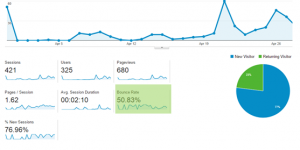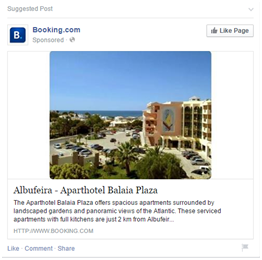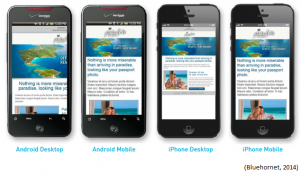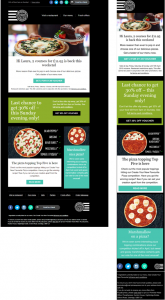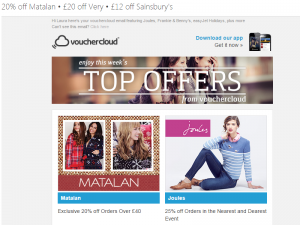Google Analytics is widely used by companies and according to Google (2015) it “not only lets you measure sales and conversions, but also gives you fresh insights into how visitors use your site, how they arrived on your site, and how you can keep them coming back”. If used correctly then it can help businesses understand their goals!
This blog has been inspired from a guest lecture at the University of Brighton by Laurence Chandler on Google Analytics and this blog will explore the features of Google Analytics and how it can be used to improve online marketing.
SEO
In terms of Search Engine Optimisation, by clicking on Traffic Sources > Sources > Search > Organic, this will produce a list of keywords in ascending to descending order in terms of how many visits they have received. This can then help determine the most popular keywords and those which are not bringing in much traffic. Knowing the keywords that bring in the most traffic means the content on your website can be altered by creating content around these topics.
Content
The content feature offers actual evidence of which content is well-liked and which is receiving less attention thus less popular. With this information, you can tailor the content to the user’s requirements to ensure it is what they are looking for.
Bounce Rate
A bounce rate indicates how much user’s are interacting with your website and how long they are staying on your site for. With a bounce rate, a high number is not good as it means user’s are clicking away from your page immediately.
So let’s look at the Bounce rate for my own blog:
As you can see, the bounce rate is 50.83% meaning half of the visitors to my blog page are clicking away immediately. This shows that some user’s are interacting with my content and as a University project blog, I am pleased with this rate! Companies may view this and see it still as too high and will want to ensure the content is suitable by fine tuning the website over time for a lower bounce rate.
Social Media
There are many platforms to social media and using these can add to reputability, as long as you remain active on them! Google Analytics allows tracking in the sense that you can see how much traffic each platform is bringing to your site. So what good is this? If Facebook is bringing in a lot more traffic than Twitter then it would be beneficial to put more time and resources into the Facebook page.
Mobile Devices
Google Analytics can show which operating system the majority of your visitors are using and for example, if this is a mobile os then it is vital to ensure your website works for mobile users. With a mixture of tablets and smart phones, responsive web design is useful as it creates content to suit many devices regardless of their size.
Thaker (2013) offers a good article on creating a design layout to suit all screens: http://bit.ly/1JFH4yR
In-page Analytics
This feature is really useful as it determines where user’s navigate on your page. It will show the links that clicked most often and the pages that are visited most so these could include the most important information you want to communicate to your customers.
Limitations
There are some limitations of Google Analytics and some of those have been explored by McNay (2015):
• Information overload- Many new features are constantly added meaning it is a steep learning curve
• Complicated software- Many features, difficult to find the section you want immediately
• Time investment- Training and resources required to understand the software
It just appears a lot time needs to go into learning all about the features of Google Analytics as it can appear complicated for a beginner.
Charlton (2014) has created a guide to using Google Analytics URL builder to track campaigns: http://bit.ly/1FrTY14
How has Google Analytics helped you and your business? Comment below.
References
Charlton, G., 2014. How to use Google Analytics URL builder to track campaigns. [Online]
Available at: http://bit.ly/1FrTY14
[Accessed 1 May 2015].
Google, 2015. Features. [Online]
Available at: http://bit.ly/1Ees9Hw
[Accessed 27 April 2015].
McNay, I., 2015. The Advantages and Disadvantages of Google Analytics for Small Businesses. [Online]
Available at: http://bit.ly/1dAZAev
[Accessed 1 May 2015].
Patel, M., 2013. Google Analytics limits and (possible) disadvantages. [Online]
Available at: http://bit.ly/1zyIrw0
[Accessed 1 May 2015].
Thaker, J., 2013. WordPress Responsive Design Layout That Fits All Screens. [Online]
Available at: http://bit.ly/1JFH4yR
[Accessed 1 May 2015].

